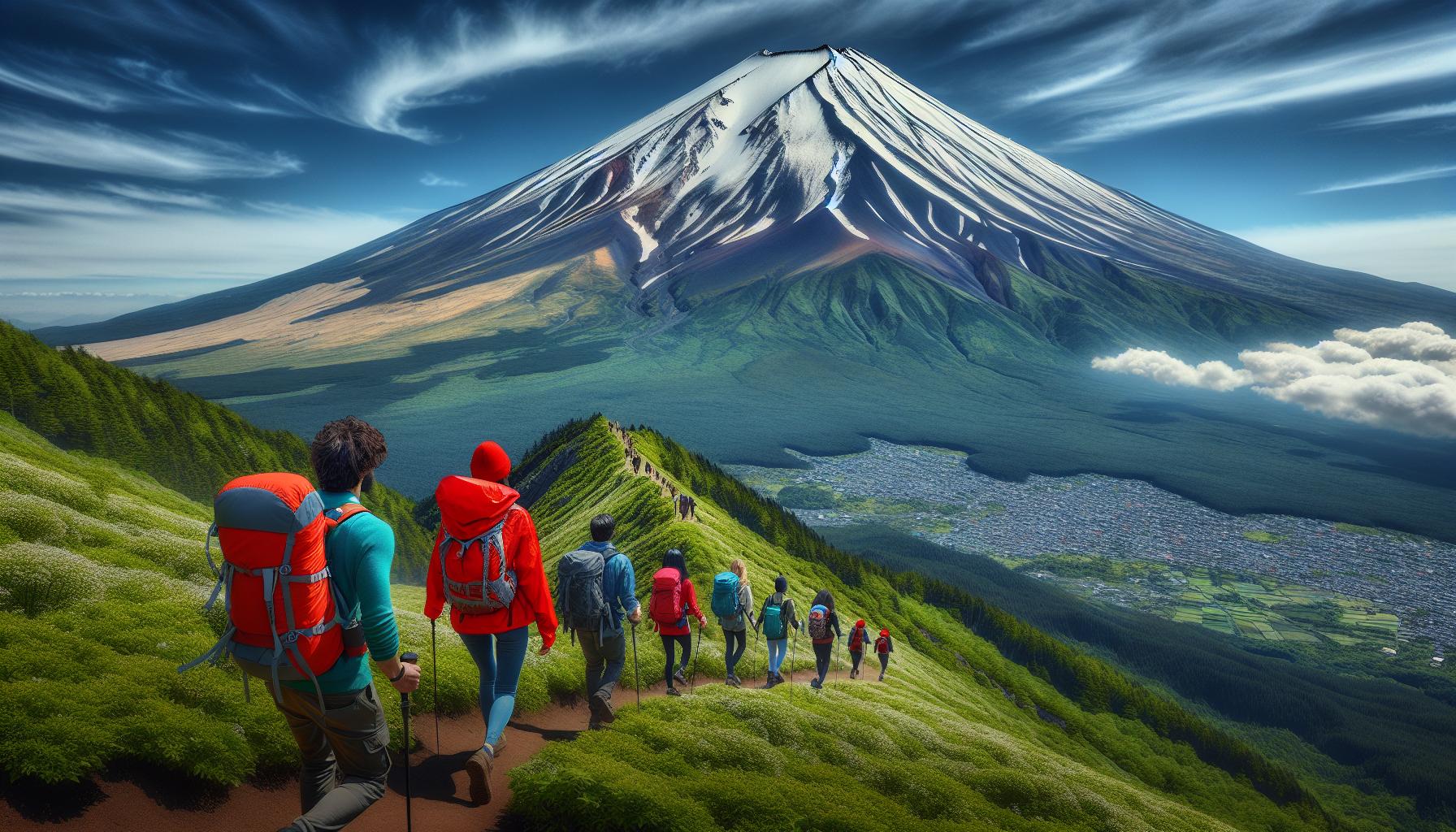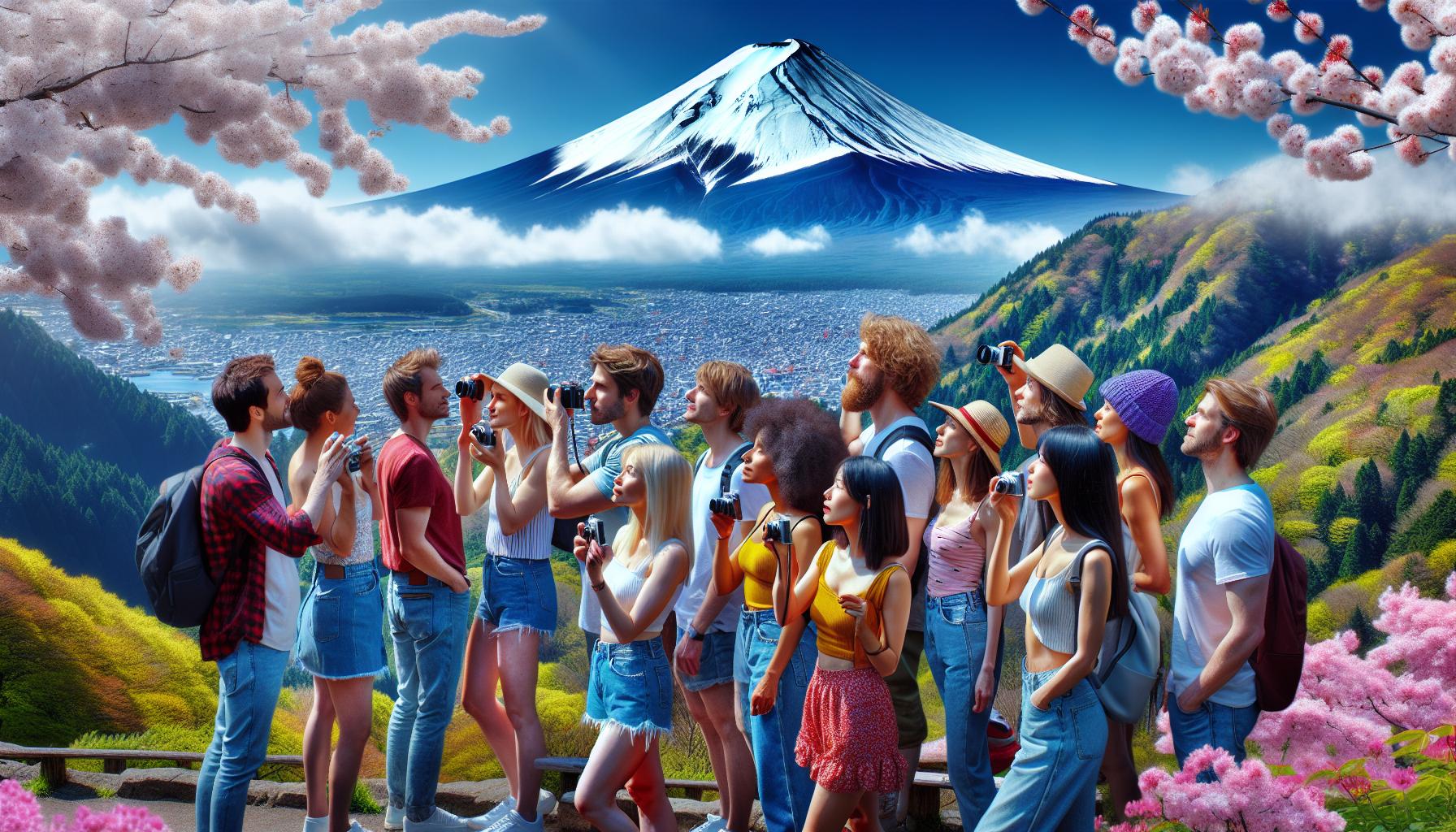Standing majestically against Japan’s skyline Mount Fuji beckons travelers with its iconic snow-capped peak and spiritual significance. This UNESCO World Heritage site isn’t just Japan’s tallest mountain – it’s a symbol of natural beauty that’s captured imaginations for centuries through art literature and photography.
Visiting Mount Fuji offers more than just stunning views. The surrounding area boasts crystal-clear lakes serene shrines and charming traditional villages that create the perfect backdrop for an unforgettable Japanese adventure. Whether travelers seek to conquer its summit during climbing season or admire its perfect symmetry from scenic viewpoints they’ll discover why this natural wonder draws millions of visitors each year.
Mount Fuji’s Significance in Japanese Culture
Mount Fuji stands as Japan’s most revered natural landmark, deeply embedded in the nation’s cultural identity through centuries of artistic, religious, and social influence. The mountain’s perfect conical shape and snow-capped peak represent harmony, beauty, and spiritual power in Japanese society.
Historical and Religious Importance
Mount Fuji’s sacred status dates back to Japan’s ancient Shinto beliefs, where the mountain serves as home to the goddess Konohana Sakuya Hime. Buddhist temples established around the mountain’s base in 800 CE transformed the area into a spiritual center. The Fuji Sengen Shrine network, comprising 1,300 shrines across Japan, honors the mountain’s divine spirit. Japanese artists captured Mount Fuji in traditional ukiyo-e prints, with Hokusai’s “Thirty-six Views of Mount Fuji” series emerging as iconic representations in the 1830s. The mountain remains an essential pilgrimage site, attracting 300,000 religious climbers annually during the summer season.
UNESCO World Heritage Status
UNESCO designated Mount Fuji as a World Heritage Cultural Site in 2013, recognizing its profound influence on Japanese art, literature, and religious practices. The designation encompasses 25 locations, including the mountain’s summit, five lakes, eight Shinto shrines, and several historical sites. This status acknowledges Mount Fuji’s role in inspiring Japanese culture for 1,200 years. The protected area spans 20,702 hectares across Yamanashi and Shizuoka prefectures. UNESCO’s recognition highlights Mount Fuji’s universal value as a sacred place and source of artistic inspiration.
Best Time to Visit Mount Fuji

Mount Fuji’s accessibility varies throughout the year, with specific seasons offering optimal conditions for both climbing and sightseeing. The mountain’s weather patterns directly influence visitor experiences and safety considerations.
Climbing Season and Weather Conditions
The official climbing season runs from July 1 to early September when temperatures range between 40°F to 60°F (4°C to 15°C). During these months, mountain huts operate at full capacity while snow levels remain minimal on the trails. The weather stays most stable in late July through August, with clearer visibility in the early morning hours. Climbing outside this period is restricted due to severe weather conditions, including heavy snowfall accumulation reaching 10 feet (3 meters) at higher elevations.
Peak Tourist Months
July and August mark the peak tourist season at Mount Fuji, attracting 300,000+ visitors. The Yoshida Trail experiences its highest traffic from mid-July through mid-August, particularly during Obon week festivals. Sunrise viewing draws significant crowds between July 25 to August 15, with summit stations reporting 2,000+ daily visitors. Early September offers reduced crowds with temperatures averaging 55°F (13°C), though weather conditions become less predictable. Popular viewing spots like Lake Kawaguchiko reach capacity limits during weekends in the peak season from 10:00 AM to 3:00 PM.
| Month | Average Temperature | Daily Visitors | Weather Conditions |
|---|---|---|---|
| July | 40-60°F (4-15°C) | 2,000+ | Stable, Clear mornings |
| August | 45-65°F (7-18°C) | 2,500+ | Stable, Occasional rain |
| September | 35-55°F (2-13°C) | 1,000+ | Variable, More clouds |
Popular Mount Fuji Viewing Spots
Mount Fuji’s majestic silhouette creates stunning photo opportunities from various vantage points across the surrounding regions. These locations offer unique perspectives of Japan’s most iconic peak throughout different seasons.
Chureito Pagoda
The Chureito Pagoda stands as one of Japan’s most photographed locations, situated in Fujiyoshida City. The five-story vermillion structure sits 400 steps above ground level, offering an elevated view of Mount Fuji framed by cherry blossoms in spring or vibrant maple leaves in autumn. Photographers capture iconic shots from the observation deck between 9:00 AM to 4:30 PM daily, with early morning hours providing the clearest views. The pagoda belongs to the Arakura Sengen Shrine complex, dating back to 1963 as a peace memorial.
Fuji Five Lakes Region
The Fuji Five Lakes (Fujigoko) region comprises Lake Kawaguchiko, Lake Yamanakako, Lake Saiko, Lake Motosuko Lake Shojiko. Lake Kawaguchiko offers the most accessible views, featuring well-developed tourist infrastructure including the Kachi Kachi Ropeway. Lake Yamanakako, the largest of the five lakes, presents unobstructed views from its northern shore. The Panoramic Ropeway at Lake Kawaguchiko elevates visitors 1,075 meters above sea level, providing 360-degree views of Mount Fuji. Each lake reflects Mount Fuji’s image on clear days, creating perfect photo opportunities during sunrise or sunset.
Activities Around Mount Fuji
Mount Fuji offers diverse recreational activities throughout its surrounding region. The area combines outdoor adventures with traditional Japanese experiences, creating unique opportunities for visitors to explore this iconic landmark.
Hiking and Climbing Routes
The Yoshida Trail stands as the most popular climbing route to Mount Fuji’s summit, featuring four stations along its 6-kilometer path. Seasoned climbers access the challenging Fujinomiya Trail, starting at the highest elevation point of 2,400 meters. The Subashiri Trail presents a quieter alternative with dense forest coverage through its lower sections. Each trail includes mountain huts for overnight stays, offering basic accommodations at 3,000-meter elevations. The Gotemba Trail extends the longest distance at 7 kilometers, attracting experienced hikers seeking a less crowded experience. Official mountain guides lead guided tours from July through early September, providing safety instruction climbing techniques for groups of 4-6 people.
Lake Activities and Hot Springs
Lake Kawaguchiko hosts water sports including kayaking paddleboarding boat tours. Traditional onsen bathhouses dot the shoreline, with Benifuji no Yu offering panoramic mountain views from its outdoor baths. Visitors explore the lakes via rental bicycles, following the 20-kilometer circuit around Lake Yamanakako. Lake Saiko features fishing spots for rainbow trout carp throughout the year. The Fugaku Wind Cave maintains a constant temperature of 37°F (3°C), providing a cooling experience during summer months. Yurari Onsen accommodates 150 guests daily in its mineral-rich baths, sourced from underground springs. Swan paddle boats operate on Lake Kawaguchiko from March through November, offering 30-minute rentals for lake exploration.
Getting to Mount Fuji
Mount Fuji’s accessibility from Tokyo makes it a convenient destination for travelers. Multiple transportation options connect visitors to various entry points around the mountain.
Transportation Options from Tokyo
Direct buses run from Tokyo’s Shinjuku Station to Mount Fuji’s 5th Station in 2.5 hours. The Fujikyu Railway line connects Shinjuku to Kawaguchiko Station in 2 hours with trains departing every hour. Express buses operate from both Haneda Airport (3 hours) and Narita Airport (4 hours) to Kawaguchiko Station. The JR Pass covers the train journey from Tokyo to Otsuki Station where travelers transfer to the Fujikyu Railway.
| Transport Method | Duration | Frequency | Cost (¥) |
|---|---|---|---|
| Direct Bus | 2.5 hrs | Hourly | 2,700 |
| Train | 2 hrs | Hourly | 4,130 |
| Haneda Bus | 3 hrs | 8x daily | 2,600 |
| Narita Bus | 4 hrs | 6x daily | 4,000 |
Guided Tours vs Independent Travel
Tour companies offer day trips from Tokyo including transportation entrance fees lunch stops at viewing spots. Independent travelers enjoy flexibility in scheduling photo stops exploring local villages setting their own pace. Guided tours provide expert commentary cultural insights prearranged logistics guaranteed summit access during peak season. Self-guided trips cost 50% less than organized tours allow extended stays at preferred locations require advance booking for mountain huts. Group tours accommodate 8-15 participants operate on fixed schedules include English-speaking guides emergency support.
| Travel Type | Average Cost (¥) | Duration | Group Size |
|---|---|---|---|
| Guided Tour | 15,000 | 12 hours | 8-15 |
| Independent | 7,500 | Flexible | Any |
Where to Stay Near Mount Fuji
Accommodations near Mount Fuji range from traditional Japanese inns to luxurious resorts. The Fuji Five Lakes region offers diverse lodging options with stunning views of Japan’s iconic peak.
Traditional Ryokans
Kawaguchiko Onsen Konanso exemplifies authentic Japanese hospitality with its traditional tatami rooms overlooking Mount Fuji. Located in the Fuji Five Lakes area, this ryokan features natural hot spring baths, seasonal kaiseki meals served in private rooms. Mizuho Hotel maintains centuries-old customs, offering guests yukata robes, communal onsen baths, traditional Japanese gardens. The historic Fujisan Onsen Hotel dates back to 1908, providing meditation spaces, tea ceremonies, futon bedding on woven tatami floors. Each ryokan incorporates local ingredients into their multi-course meals, including fresh seafood from Shizuoka Prefecture mountain vegetables.
Modern Hotels and Resorts
Highland Resort Hotel & Spa provides contemporary amenities with floor-to-ceiling windows framing Mount Fuji views. The resort features an indoor pool, spa facilities, multiple restaurants. Fuji View Hotel combines Western-style rooms with Japanese hospitality, offering both indoor outdoor hot springs. Hotel Mt. Fuji stands on Lake Yamanaka’s shore, equipped with a fitness center, tennis courts, private balconies in each room. La Vista Fujikawaguchiko caters to modern travelers with its infinity pool, international dining options, sophisticated design elements that complement the surrounding nature. These properties maintain high-end services while incorporating elements of Japanese culture into their guest experience.
Conclusion
Mount Fuji stands as Japan’s most iconic natural landmark offering visitors an unforgettable blend of natural beauty spiritual significance and outdoor adventure. From its snow-capped peak to the surrounding lakes and traditional villages the region provides endless opportunities for exploration and cultural immersion.
Whether climbing to the summit photographing the perfect shot from Chureito Pagoda or relaxing in a lakeside onsen Mount Fuji delivers an authentic Japanese experience that’s truly one-of-a-kind. With convenient access from Tokyo and accommodation options for every budget it’s no wonder this UNESCO World Heritage site continues to captivate millions of visitors each year.

